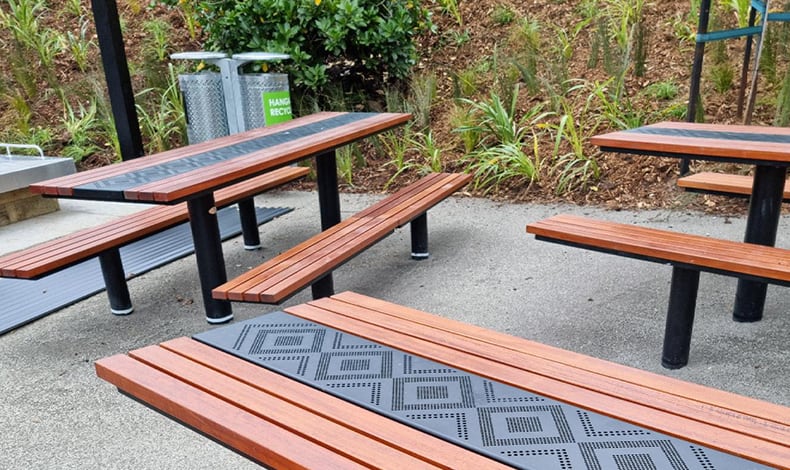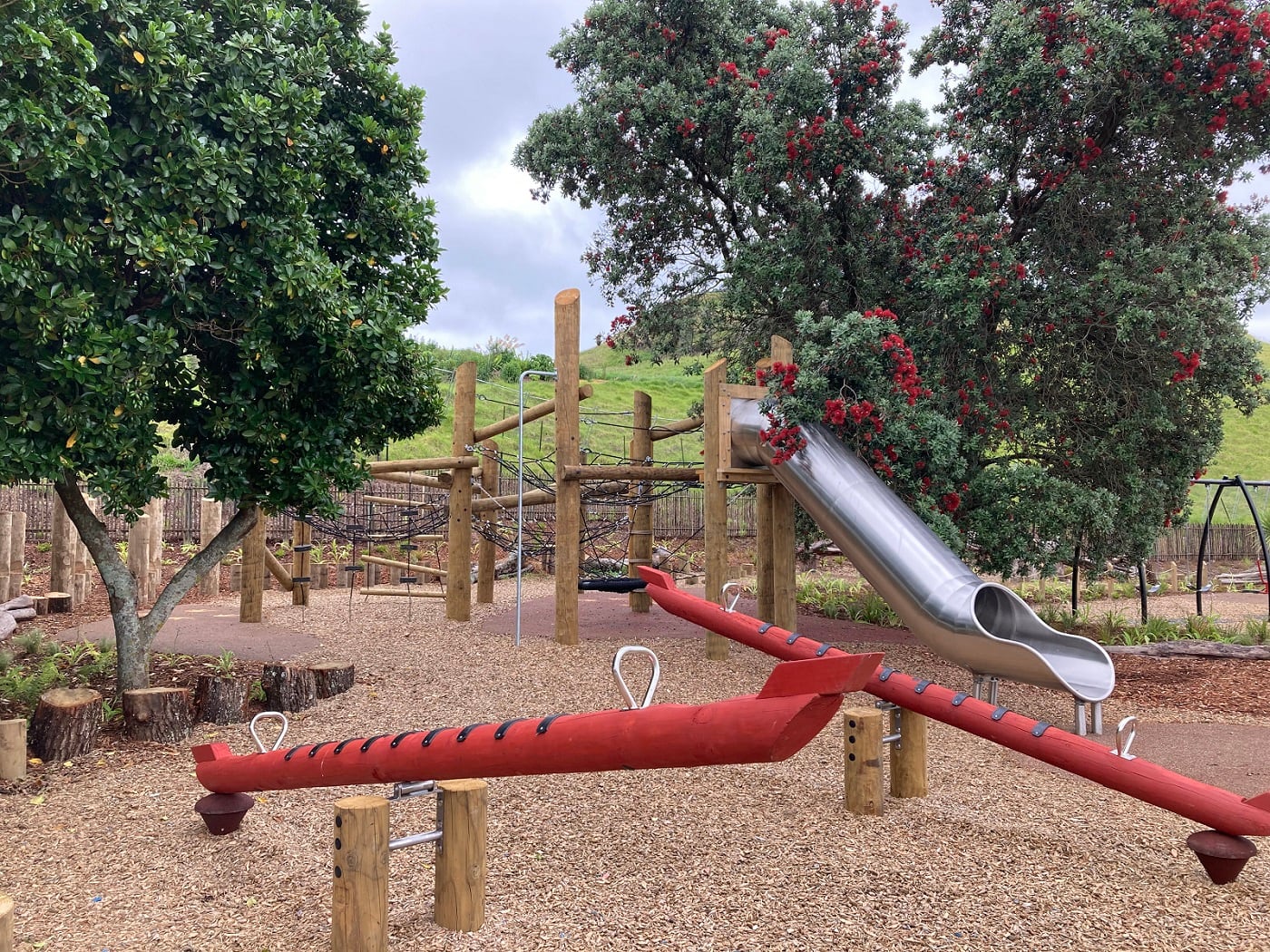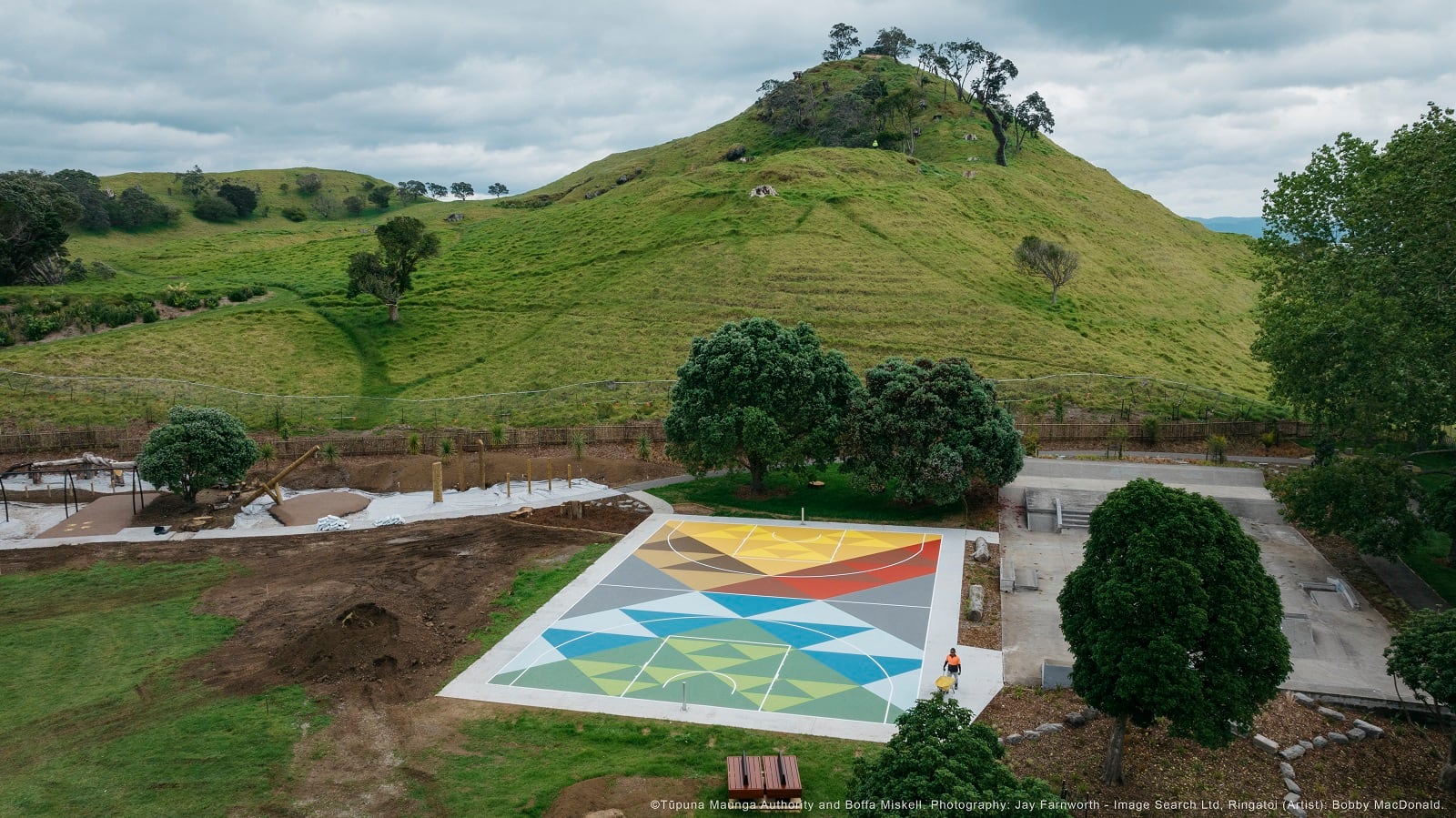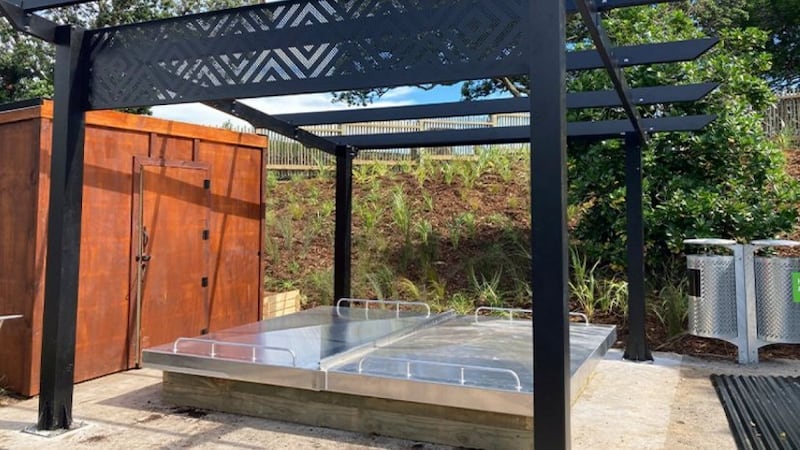The hāngi pit at Te Pane o Mataoho. Source / Boffa Miskell
For centuries, Te Pane o Mataoho (Māngere Maunga) has been home to many whānau and hapori (community) who have lived, worked and played on this wāhi taonga (treasured place). Now, a new whānau ātea, family recreation space, at the mountain has opened featuring a bookable community hāngī pit.
The hāngī pit is just one of many elements of the ātea at the foot of the maunga, as well as a māra hūpara (Māori playground), basketball court and skate space.
The Tūpuna Maunga Authority worked with hāngī master Rewi Spraggon to create the pit with design support from environmental planning and design consultancy Boffa Miskell.
Spraggon says the hāngī pit is made up of the same materials used for traditional hāngī.
“I’ve always been an advocate for hāngī tuturu and making sure that this art form or this style of living doesn’t get lost. By giving the community opportunity and teaching them how to hāngī properly then that obviously will help the interest.”

Tables next to the hāngī pit at Te Pane o Mataoho. Source / Boffa Miskell
The Boffa Miskell design team undertook extensive research and design-testing with Spraggon to learn the processes of making hāngī and understand the associated whakapapa in relation to Te Pane o Mataoho.
The design of the hāngī pits is Spraggon’s own creation which caters to up to 400-plus people at a time. Some changes were required to make the hāngī and its surroundings fit for purpose.
Landscape architect Aynsley Cisaria says, “The development of this innovative hāngī and kai space is a collective effort, bringing together traditional and contemporary knowledge from many. New methods to shelter, protect and ensure proper health and safety standards for hāngī were undertaken by a community of innovative and future-thinking people.”
There have been no hāngī implemented in public spaces due to many restrictions and health and safety issues. However, in 2019 the Tūpuna Maunga Authority saw the opportunity to see whether practices like hāngī can be designed safely and implemented in a way that respects tradition, the community and the environment.
“The authority worked to promote an enduring relationship between the maunga and the wider community and envisaged a place of gathering, recreating, and sharing pūrakau and kai.”
Spraggon says the hāngī pit will be able to be booked out for all sorts of activities, including events held at the maunga such as sport community days and concerts.
“There’s also a tourism element to it where you can do hāngī workshops at the same time with manuhiri from overseas, so there’s huge potential there.”
People will be able to book the hāngī pit after its launch in March 2023 via the Tūpuna Maunga Authority website.
“Me and my team will oversee the whole thing to just make sure that the equipment is used right and correctly. We’ve also got our own food plan for prepping and that sort of stuff, says Spraggon.
“It’s important if we do a hāngī we do it properly and teach properly.”

Waka see-saws are part of the māra hupara in the Tūpuna Maunga Authority's new whānau ātea. Source / Auckland Council
Traditional Māori play expert Harko Brown advised on the design of the new māra hūpara (Māori playground) to include tūpekepeke (upright logs for jumping practice), whirinaki (climbing log), wiwi wawa (grassed play mounds) and more.
It also features two basketball half-courts painted with patterns representing mana whenua stories, a skate space and auditory and wheelchair-accessible play elements.
Deputy Chair and Māngere-Ōtāhuhu ward councillor Alf Filipaina says, “We are thrilled to make the whānau ātea available to the Māngere Bridge community. We anticipate the whānau ātea at Te Pane o Mataoho will fast become a destination for families in Tāmaki Makaurau.”
The space will be further adorned by mana whenua artists and local kura this year.


